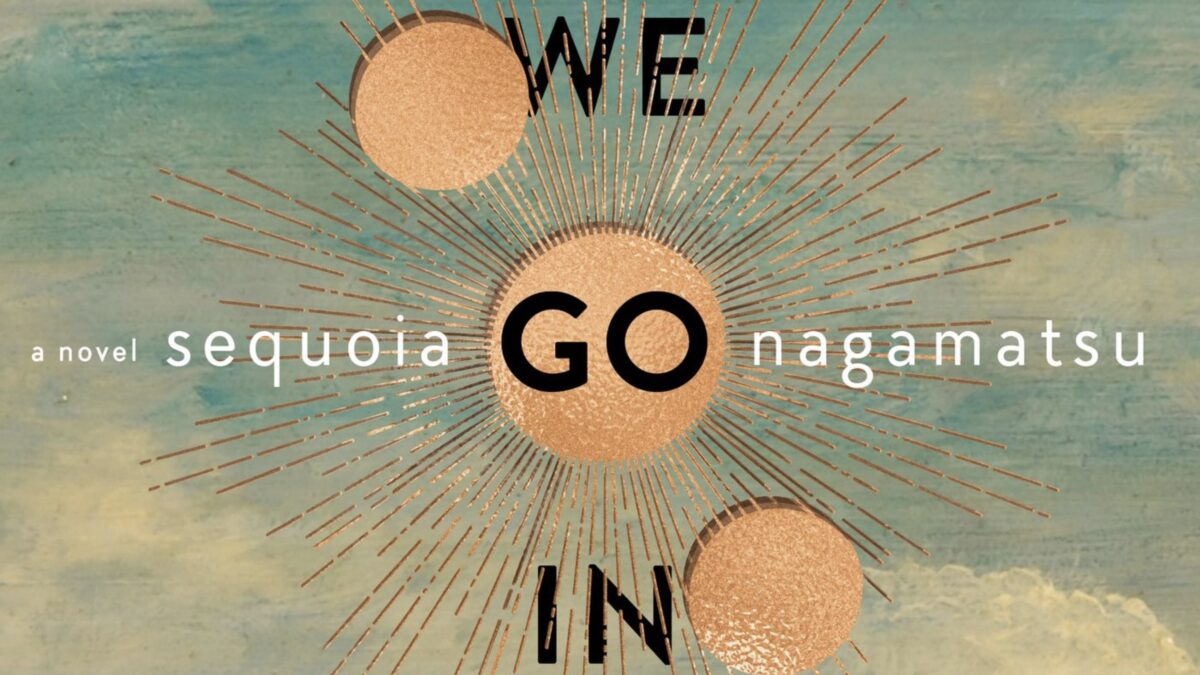One cannot accuse How High We Go in the Dark by Sequoia Nagamatsu of lacking in ambition. This humane, literary, dystopian science-fiction novel by Sequoia Nagamatsu encompasses love, sadness, and death across several millennia and into deep space.
It begins a few years from now, with a careless group of research scientists at an outpost in a thawing Siberia unleashing a virus onto the world. The virus is a scary shape-shifter, changing organs into other ones, resulting in “brain cells in the liver, lung cells in the heart.”
The “Arctic Plague” will alter life for centuries to come, ushering in a warped world of euthanasia parks, forensic body farms, and elegy hotels — and provide the angst for these individual stories wrapped into novel form. But does the author manage to capture it all in this episodic collection of humans fighting a great plague?
The chapters move from place to place, character to character, staying generally chronological but sometimes making deep shifts in time. Most poignant was the second chapter, “City of Laughter,” which answers on an emotional level the question no one wants to ask: What if Covid had targeted children?
Nagamatsu comes up with an audaciously grim scenario: The “City” is actually a euthanasia park for dying children, a sort of second-hand Disneyland crammed with forced jollity and “bulls–t balloon animals” for the sake of the sick children, where parents choose to let their kids be kids for a few days instead of dying inside an overcrowded hospital.
Skip, a lost soul who finds stand-up comic gigs sparse in the new age, finds work at the City of Laughter and bonds with one of his charges, the sick child Finch and his desperate mother Dorrie. The park’s most striking feature is the Chariot of Osiris rollercoaster, providing “the final ride” for the children. “City,” which could have been dark satire, instead edges toward sentimentality but is wholly redeemed by the lovely and haunting final paragraphs.
“Through the Gardens of Memory” is sweet and a little scary in its conception of a dark afterlife floating in a vast space of strangers. Otherwise, the novel has a certain muffled stoicism about the crisis and little sentiment about the afterlife, as perhaps befits its mostly-Asian characters and settings.
But the book loses momentum in the middle and never wholly recovers.
“Pig Son” is representative of the strengths and weaknesses of Nagamatsu’s humanist style. David, the estranged husband of Dorrie (the mother of Fitch, no coincidence) is a scientist who tends to Snortorious, an experimental pig that shockingly gains speech and intelligence in the lab. David struggles with how to tell this self-aware being, who he has come to love, that he was bred for his organs to help human children dying of the plague.
Just as Skip the comedian is the surrogate father to David’s son Fitch, Pig functions as David’s surrogate son. Oh my, the pig even “loves belly rubs.” But after sketching out this unbearable moral dilemma, the chapter ends with a soft landing that felt evasive. Overall, How High suffers from a lack of conflict.
The linked-stories format is not wholly successful as an organically unified novel. There is a softness around the edges, as if the author is trying too hard to give every character his reasons, not leaning in all the way into his frightening content.
One wishes for more explicit scenes like the punch-out of a cartoon mascot by a grieving father in “…Laughter” or the family spat in “Elegy Hotel.” As a heartless cynic, I preferred the black-humored moments like these from “Elegy Hotel,” a place where guests are told to “‘Dial 9 for maid service. Dial 8 for the on-call mortician” and the manager fields requests for help such as, “Excuse me, but my husband seems to be leaking.”
Both the science and the human interactions feel real, The writing is heartfelt and humane, but maybe at the expense of missing out on the equally human notes of pettiness, anger, and greed. It’s also polished to the point that the narrative sometimes slips through your fingers if you’re not paying close attention.
Nagamatsu captures the lonesome melancholy of a flattened world of gas station sandwiches; communal suicides; broken down robot-dogs who are mourned as part of the family. At its best, How High conjures an atmosphere of desolate second-handedness remindful of Kazuo Ishiguro’s heart-breaking novel Never Let Me Go.
So is this a Covid novel? Blessedly, no. There are few masks around, and no one can agree on how the Arctic plague spreads — although lines about “abandoned cities and shuttered schools” may lead one to reflect on recent real-world events, I found no reference to the current pandemic. This plague is the author’s own.
Nagamatsu also says his inspiration came pre-Covid, and the novel’s copyright page confirms that, revealing How High as a collection of previously published stories, with plague-related themes inserted and character names changed in order to hook the scattered episodes together.
How High is good enough to make me frustrated at how it could have been even better. Ultimately, it’s strong content in a stifling format that trades narrative drive for recurring episodes of domestic drama. And the final chapter’s wide-scope reveal, including that by-now predictable family template, works against the book’s theme of human resilience. But Nagamatsu is a gifted writer and if he ever realizes his potential, watch out.









